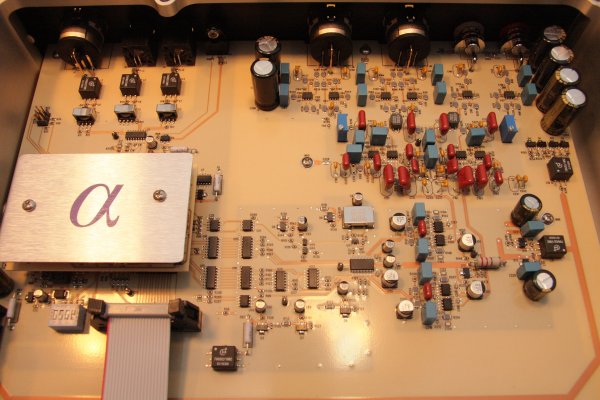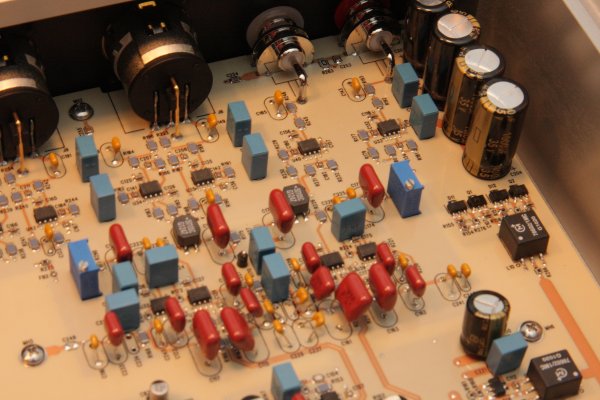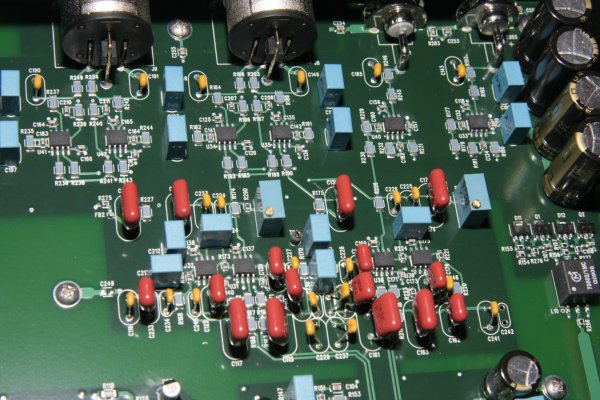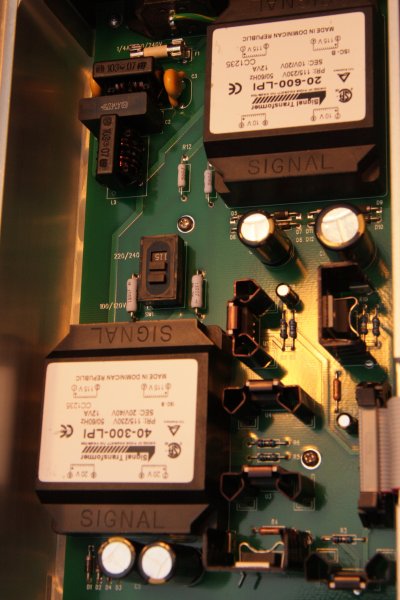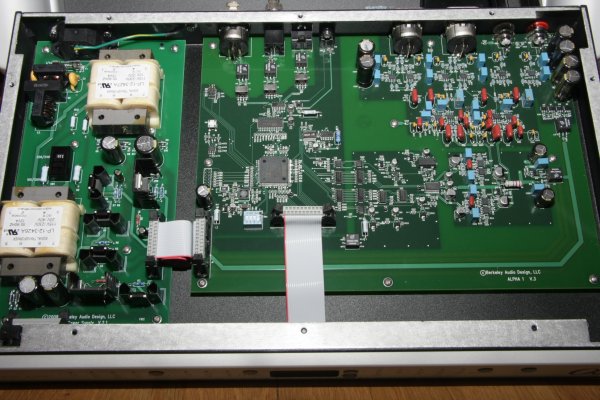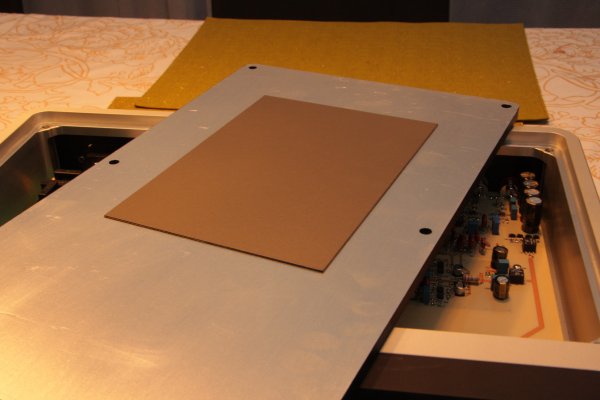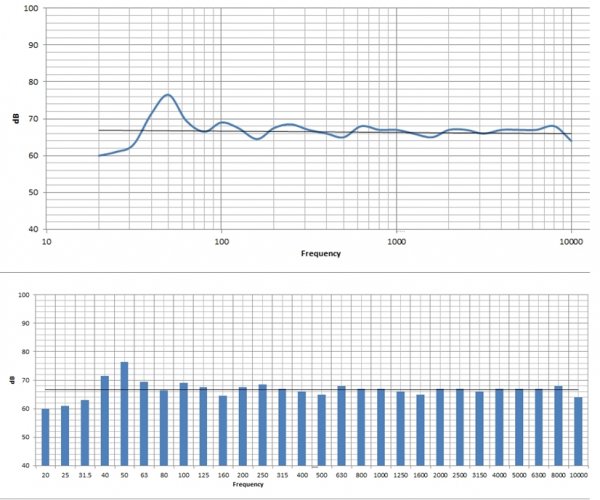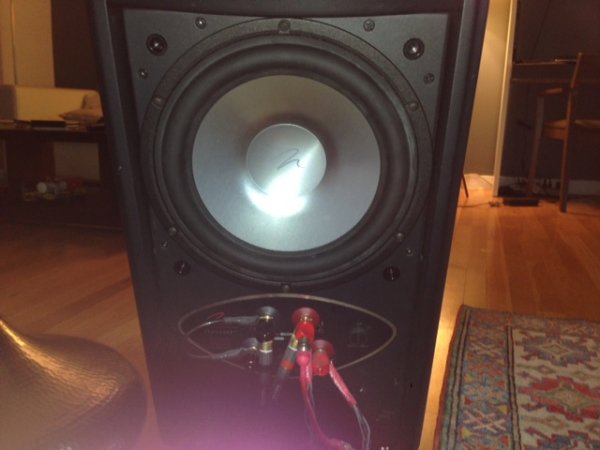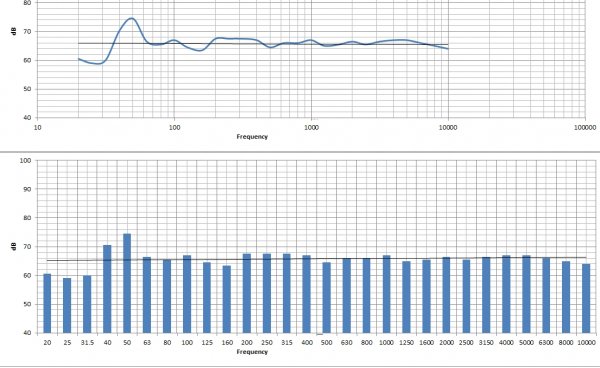Hi Shane, I didn't see a link - but I imagine there can only be one type of "mu metal" and this http://www.ebay.com/itm/like/171065878030?lpid=82&chn=ps appears to be authentic. The type of material you eventually use should be based on its permeability value - for a table see http://en.wikipedia.org/wiki/Permeability_(electromagnetism) and you want the highest possible value (mu metal's is really high, as you can see); and for best results, you really want whatever solution you pick "stuck on" the box (e.g. steel or iron plates will only work to a certain degree if they are cut to the dimensions you want, and don't float away from the box, even by a small distance).
Having seen my own results - where this XP-25 has really nothing to do with what came out of the box - my suggestion is to approach the problem in holistic way as well: treat the entire chain (from the cartridge to phono, and everything around them) as a huge "antenna" for hum and RF pickup. Then, split the problem in two: a) address hum; b) address RF. Start with assessing how much hum and overall noise (hiss, white noise) you have with your preamp's gain at max; move around equipment (and the XP-25) to see how they might affect especially hum (the primary source of hum in my case was actually the Berkeley Alpha DAC, and I moved it from under the XP-25 to well above it, before shielding anything), experiment with grounding (minor improvement with lifting the Alpha's ground in my case), use a magnetometer to figure out magnetic fields (or even a compass), experiment with phono cables, etc. So optimize any electrical and positional dependencies first, then attempt to shield.
For reference, the video above shows just about everything I have done with the shields, but not the following: rearranging some equipment; the MIT Magnum Z-trap in-series with the XP-25's power cord; mu-metal around its power transformer; the fact the XP-25 is now connected to its own dedicated line with a Shunyata Defender next to it; lifting of the ground in the Berkeley and my amps (so, star-grounding at the preamp chassis); the use of shielded power cords all around; loading the unused input of the XP-25 with custom RCAs sporting loading resistors; using input #1 as opposed to the more noisy #2 (why the heck that is, I don't know); and finally, the influence of the phono cable (an extremely important factor). It would be an understatement to say that EVERYTHING I have done made an improvement, so just shielding the XP-25 isn't likely to do it all.
Obviously, I have taken a fanatical, if not maniacal, approach to addressing hum and hiss/noise in the XP-25; and the simple reason is that the XP-25 appears to me to be substandardly built in that regard, and was apparently meant to be set up exactly as shown in the various Pass demos, photos et al - far away from everything else; and even then, I don't believe you get the maximum out of it. Contrast its construction to, say, the Moon 810LP, whose shields and power supply execution are truly phenomenal, plus the board floats on gel. I should point out that I had NO hum or noise/hiss issues with the 810, when I had it in for evaluation; if it only sounded as good - but I give credit to the 810 for inspiring me to work on the XP-25 (I have photos of the 810's innards, if you are interested). Therefore, yes, "substandard" is the best way I can describe the XP-25 in that regard, but boy, does the whole analog chain rock right now and outclasses my digital by a very wide margin (i.e. only now am I hearing the hi-rez nature of analog recordings through the LP medium).
Finally, to quantify the results, I would characterize them as truly night and day, and in terms of effectiveness of each shield, mumetal was as effective at killing hum as the copper shield was at reducing high frequency noise, and both very dramatic. Overall, the shields did half the work, the rest of it is due to the rest of the changes I described.
Having seen my own results - where this XP-25 has really nothing to do with what came out of the box - my suggestion is to approach the problem in holistic way as well: treat the entire chain (from the cartridge to phono, and everything around them) as a huge "antenna" for hum and RF pickup. Then, split the problem in two: a) address hum; b) address RF. Start with assessing how much hum and overall noise (hiss, white noise) you have with your preamp's gain at max; move around equipment (and the XP-25) to see how they might affect especially hum (the primary source of hum in my case was actually the Berkeley Alpha DAC, and I moved it from under the XP-25 to well above it, before shielding anything), experiment with grounding (minor improvement with lifting the Alpha's ground in my case), use a magnetometer to figure out magnetic fields (or even a compass), experiment with phono cables, etc. So optimize any electrical and positional dependencies first, then attempt to shield.
For reference, the video above shows just about everything I have done with the shields, but not the following: rearranging some equipment; the MIT Magnum Z-trap in-series with the XP-25's power cord; mu-metal around its power transformer; the fact the XP-25 is now connected to its own dedicated line with a Shunyata Defender next to it; lifting of the ground in the Berkeley and my amps (so, star-grounding at the preamp chassis); the use of shielded power cords all around; loading the unused input of the XP-25 with custom RCAs sporting loading resistors; using input #1 as opposed to the more noisy #2 (why the heck that is, I don't know); and finally, the influence of the phono cable (an extremely important factor). It would be an understatement to say that EVERYTHING I have done made an improvement, so just shielding the XP-25 isn't likely to do it all.
Obviously, I have taken a fanatical, if not maniacal, approach to addressing hum and hiss/noise in the XP-25; and the simple reason is that the XP-25 appears to me to be substandardly built in that regard, and was apparently meant to be set up exactly as shown in the various Pass demos, photos et al - far away from everything else; and even then, I don't believe you get the maximum out of it. Contrast its construction to, say, the Moon 810LP, whose shields and power supply execution are truly phenomenal, plus the board floats on gel. I should point out that I had NO hum or noise/hiss issues with the 810, when I had it in for evaluation; if it only sounded as good - but I give credit to the 810 for inspiring me to work on the XP-25 (I have photos of the 810's innards, if you are interested). Therefore, yes, "substandard" is the best way I can describe the XP-25 in that regard, but boy, does the whole analog chain rock right now and outclasses my digital by a very wide margin (i.e. only now am I hearing the hi-rez nature of analog recordings through the LP medium).
Finally, to quantify the results, I would characterize them as truly night and day, and in terms of effectiveness of each shield, mumetal was as effective at killing hum as the copper shield was at reducing high frequency noise, and both very dramatic. Overall, the shields did half the work, the rest of it is due to the rest of the changes I described.


